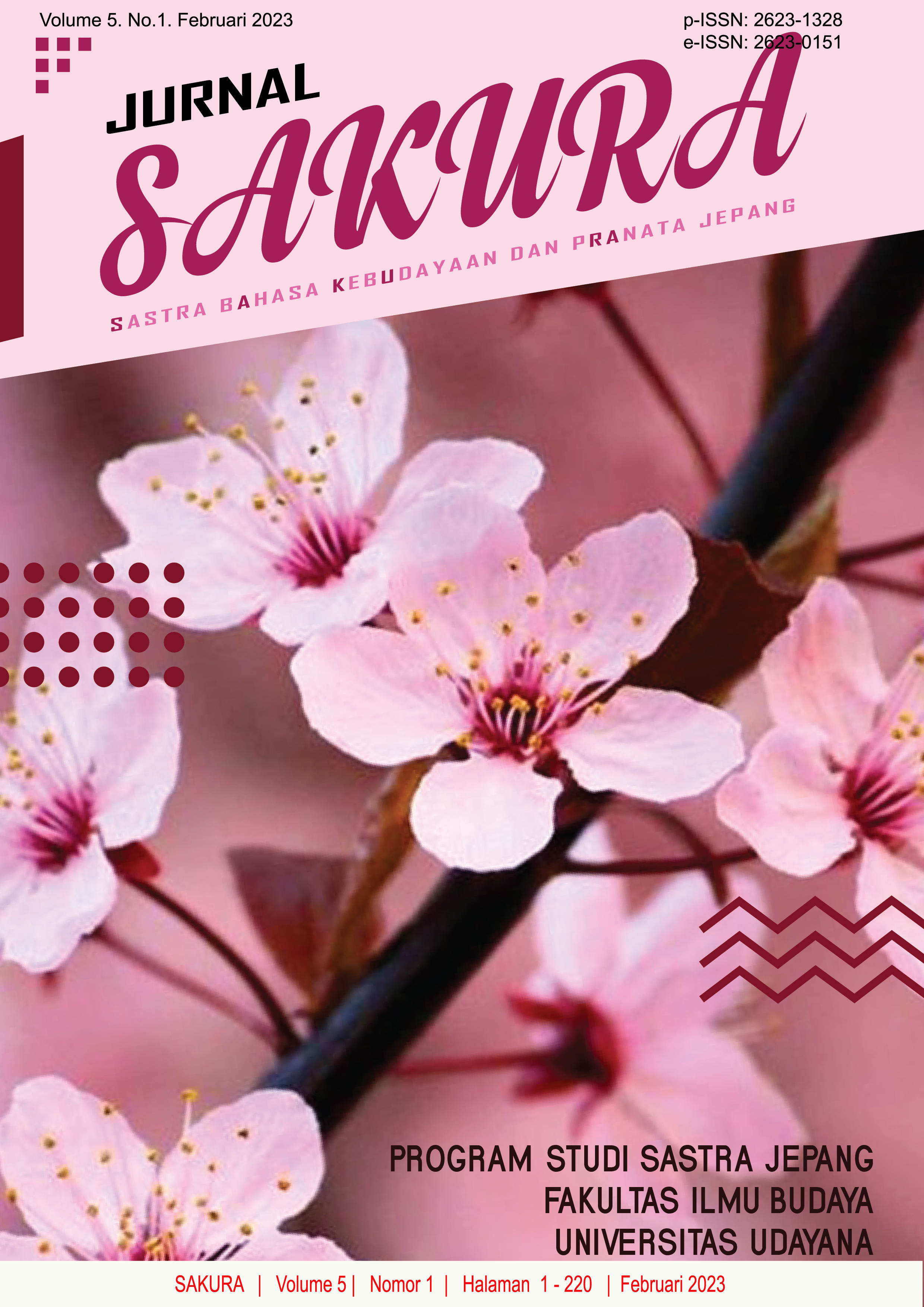Ilokusi Direktif dan Implikatur pada Iklan Instagram dalam Bahasa Jepang dan Bahasa Indonesia: Kajian Pragmatik
Abstract
In understanding an advertisement, it is necessary to comprehend a pragmatic context. This study discusses directive speech acts and implicatures in advertising on Instagram with a pragmatic study. The purpose of the study was to identify and describe the directive speech acts and their implicatures contained in the Instagram uploads of food products in Japanese and Indonesian and to compare the similarities and differences based on the theory of contrastive analysis. The method used is the descriptive qualitative method. The data source is obtained from the Instagram caption of food products. The results of this study are; (1) directive speech acts and implicatures of Japanese speakers are to; begging, ordering, and suggesting, (2) directive speech acts and implicatures of Indonesian speakers are to; inviting, ordering, and suggesting, (3) the similarity of advertising is that Japanese speakers and Indonesian speakers tend to use command directive speech acts to convey the meaning of the suggestion, and use request directive speech acts to convey the meaning of the command, the difference in advertising is that Japanese speakers tend to use fantasy promotion strategies about the product, while Indonesian speakers tend to use group life promotion strategies.
Downloads
References
Arifiany, N. (2016). Pemaknaan Tindak Tutur Direktif Dalam Komik “Yowamushi Pedal Chapter 87-93).” 2, 1–11.
Austin, J. L. (1962). How To Do Things with Words. Oxford University Press.
Djajasudarma, & Fatimah. (1993). Metode Linguistik: Ancangan Metode Penelitian dan Kajian. PT. Eresco.
Durianto, Darmadi, & Sugiarto. (2003). Invasi Pasar dengan Iklan yang Efektif: Strategi, Program dan Teknik Pengukuran. PT. Gramedia Pustaka Utama.
Grice, P. (1991). Studies in the Way Words. Harvard University Press.
Jumadi. (2017). Wacana, Kekuasaan, dan Pendidikan Bahasa (Rafiek (ed.)). Pustaka Pelajar (Anggota IKAPI).
Koizumi, T. (1990). Nihongo Goyouron (Implicational Linguistics : Japanese Pragmatics).
Leech, G. N. (1983). Principles of Pragmatics. Longman.
Levinson, S. C. (1983). Pragmatics. Cambridge University Press.
Mahsun. (2005). Metode Penelitian Bahasa. PT. Raja Grafindo Persada.
Namatame, Y. (1996). Nihongo Kyoushi no tame no Gendai Nihongo Hyougen Bunten. Kabushiki Kaisha Honjinsha.
Sarif, I., & Darmayanti, N. (2020). Tindak Tutur Bahasa Jepang Pada Media Sosial Instagram di Masa Pandemi Covid-19: Suatu Kajian Pragmatik. Metahumaniora, 10, 285–294.
Searle. (1979). Expression And Meaning (Studies in the Theory of Speech Acts). Cambridge University Press.
Sudaryanto. (1993). Metode dan Aneka Teknik Analisis Bahasa: Pengantar Penelitian Wahana Kebudayaan secara Linguistis. Duta Wacana University Press.
Sutedi, D. (2009). Penelitian Pendidikan Bahasa Jepang (Humaniora).
Yule, G. (1996). Pragmatics. Oxford University Press.













